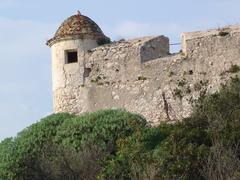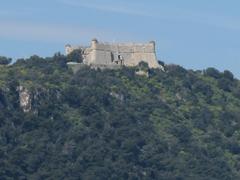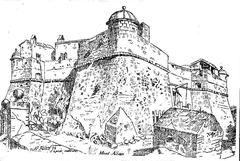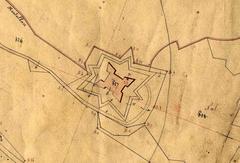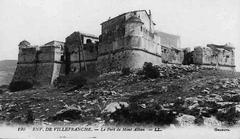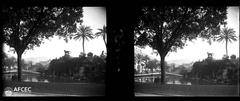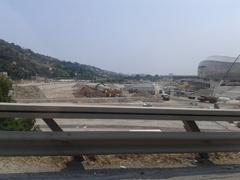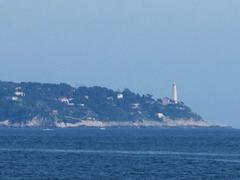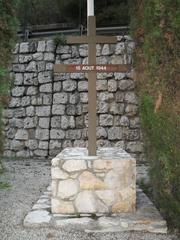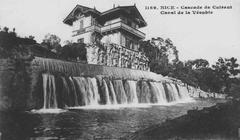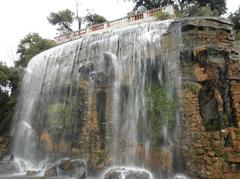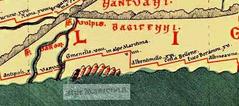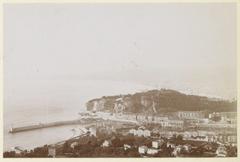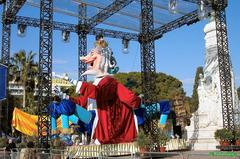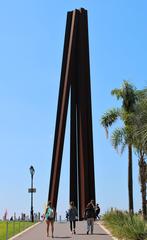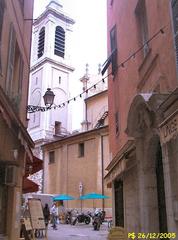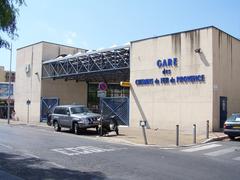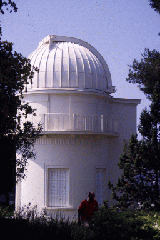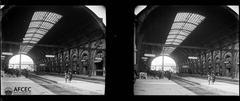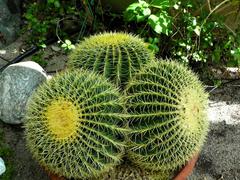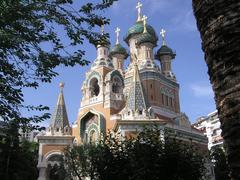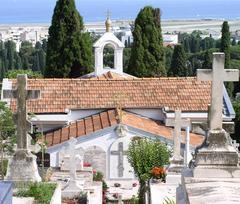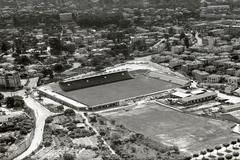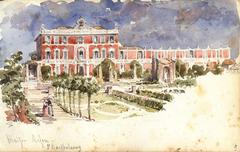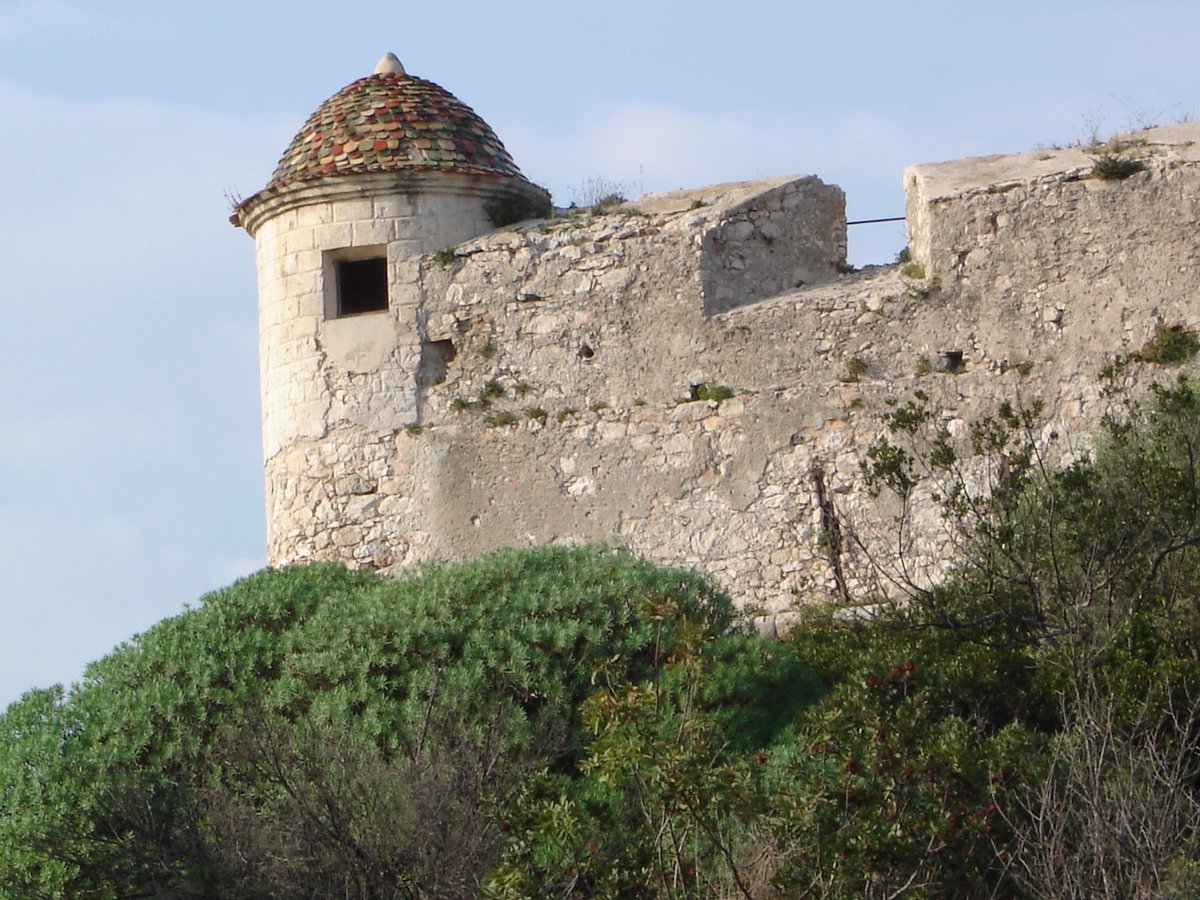
Visiting Fort du Mont-Alban in Nice: Hours, Tickets, and Tips
Date: 19/07/2024
Introduction
Fort du Mont-Alban, majestically perched on Mont Alban hill in Nice, France, is a historical military fortification offering a panoramic view of the Mediterranean Sea and the surrounding landscapes. Constructed between 1557 and 1560 under the orders of Duke Emmanuel Philibert of Savoy, the fort was a strategic part of the Duchy of Savoy’s defense system, designed to protect against invasions from French and Ottoman forces (Nice Tourism). The Italian military engineer Domenico Ponsello oversaw its construction, incorporating Renaissance military architectural principles, resulting in a star-shaped layout with bastions at each corner. Over the centuries, Fort du Mont-Alban has played a significant role in regional conflicts, including the Nine Years’ War and the War of the Spanish Succession, and has witnessed various political changes, from the Napoleonic era to its current status as a historical monument (Culture Nice). Today, it stands as a testament to the rich military history of the region and serves as a popular tourist attraction, offering visitors a unique glimpse into the past and stunning views of Nice and the Bay of Villefranche.
Table of Contents
- Introduction
- Origins and Construction
- Role in Regional Conflicts
- Napoleonic Era and Beyond
- 20th Century and Preservation Efforts
- Visitor Information
- Nearby Attractions
- Modern-Day Significance
- FAQ
- Conclusion
Origins and Construction
Fort du Mont-Alban was constructed between 1557 and 1560 under Duke Emmanuel Philibert of Savoy’s orders. Its strategic location on Mont Alban hill, at an elevation of 222 meters, was chosen to provide a vantage point over the surrounding areas, including the Bay of Villefranche and the city of Nice. The fort was part of a broader defensive strategy to protect the Duchy of Savoy from potential invasions by French and Ottoman forces (Fort du Mont-Alban).
The design of Fort du Mont-Alban was influenced by the military architectural principles of the Renaissance period. The Italian military engineer Domenico Ponsello implemented a star-shaped layout with bastions at each corner, allowing for better defense against artillery attacks, a significant advancement in military architecture at the time.
Role in Regional Conflicts
Throughout its history, Fort du Mont-Alban played a crucial role in various regional conflicts. During the late 16th and early 17th centuries, it was a key defensive structure in the wars between the Duchy of Savoy and the Kingdom of France. In 1691, during the Nine Years’ War, the fort was captured by French forces under Marshal Catinat, who held it until the Treaty of Turin in 1696 restored it to Savoyard control.
In the early 18th century, the fort again became a focal point during the War of the Spanish Succession. The Treaty of Utrecht in 1713 resulted in the transfer of Nice and its surrounding territories to the Kingdom of Sardinia, which included the Duchy of Savoy. Fort du Mont-Alban continued to serve as a defensive stronghold, protecting the region from potential French incursions.
Napoleonic Era and Beyond
The Napoleonic Wars in the early 19th century brought significant changes to the political landscape of Europe, including the fate of Fort du Mont-Alban. In 1792, Nice was annexed by the French Republic, and the fort was integrated into the French military defense system. It saw limited action during this period, as the focus of Napoleonic campaigns shifted to other regions.
After Napoleon’s fall in 1815, the Congress of Vienna restored Nice to the Kingdom of Sardinia. Fort du Mont-Alban continued to serve as a military installation, although its strategic importance diminished with the advent of new military technologies and changing geopolitical dynamics.
20th Century and Preservation Efforts
In the 20th century, Fort du Mont-Alban’s role as a military fortification gradually declined. During World War II, it was occupied by German forces, who used it as an observation post and a defensive position against the Allied invasion of southern France in 1944. After the war, the fort was decommissioned and fell into neglect.
Recognizing its historical and cultural significance, efforts to preserve and restore Fort du Mont-Alban began in the latter half of the 20th century. In 1965, it was classified as a historical monument by the French Ministry of Culture, ensuring its protection and conservation. Restoration projects have since been undertaken to stabilize the structure and make it accessible to the public.
Visitor Information
Visiting Hours
The fort is open to the public from 10 AM to 6 PM daily, except on major public holidays. It is advisable to check the official Nice Tourism website for any changes in visiting hours.
Tickets
Entry to Fort du Mont-Alban is free of charge, making it an excellent budget-friendly activity for tourists.
Travel Tips
- Wear comfortable shoes as the terrain around the fort can be uneven.
- Bring a camera to capture the stunning panoramic views.
- Carry water and snacks, especially if you’re planning a hike.
Accessibility
The fort is accessible by car, with parking available nearby. Public transport options include bus routes that stop at the base of Mont Alban hill, from where a short hike is required to reach the fort.
Nearby Attractions
Villefranche-sur-Mer
A picturesque seaside village known for its charming old town and beautiful harbor.
Castle Hill (Colline du Château)
Offers panoramic views of Nice and a lush park perfect for a leisurely stroll.
Promenade des Anglais
A famous waterfront promenade in Nice, ideal for a scenic walk or bike ride.
Modern-Day Significance
Today, Fort du Mont-Alban stands as a testament to the rich military history of the region and serves as a popular tourist attraction. Visitors can explore its well-preserved ramparts, bastions, and interior spaces, gaining insight into the military architecture and historical events that shaped the region. The fort also offers panoramic views of the Mediterranean Sea, the city of Nice, and the surrounding landscapes, making it a must-visit destination for history enthusiasts and tourists alike.
FAQ
Q: What are the visiting hours for Fort du Mont-Alban? A: The fort is open from 10 AM to 6 PM daily, except on major public holidays.
Q: How much does it cost to visit Fort du Mont-Alban? A: Entry to the fort is free of charge.
Q: How can I get to Fort du Mont-Alban? A: The fort is accessible by car with parking nearby, and by public transport with bus routes stopping at the base of Mont Alban hill.
Q: Are there any nearby attractions? A: Yes, nearby attractions include Villefranche-sur-Mer, Castle Hill, and Promenade des Anglais.
Conclusion
Fort du Mont-Alban is not only a significant historical site but also an enriching experience for visitors. From its storied past to its stunning views, the fort offers a unique glimpse into the region’s military history. Plan your visit today and explore one of Nice’s most remarkable historical sites. For more detailed information, guided tours, and updates on special events, visit the official Nice tourism website.
References
- Nice Tourism. (n.d.). Retrieved from https://en.nicetourisme.com
- Fort du Mont-Alban. (n.d.). Retrieved from https://www.fort-du-mont-alban.com
- Culture Nice. (n.d.). Retrieved from https://www.culture-nice.fr
